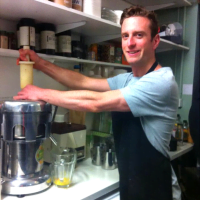When it comes to kitchen appliances, there are plenty of options available in the market. Two of the most commonly used appliances are food processors and blenders. Although they might look similar, these appliances serve different purposes. In this article, we will explore the differences between a food processor and a blender and help you decide which one is the right choice for your kitchen needs.
What is a Blender?
A blender is a kitchen appliance that is primarily used for mixing and blending ingredients. It consists of a motorized base, a container, and blades at the bottom. The blades rotate at high speed, creating a vortex that pulls the ingredients toward the bottom and blends them into a smooth mixture. Blenders are great for making smoothies, purees, and soups.
What is a Food Processor?
A food processor is a kitchen appliance that is designed to handle a variety of tasks. It typically comes with a motorized base, a work bowl, and various attachments such as blades, discs, and shredders. A food processor can chop, shred, slice, and puree ingredients. It is also great for making dough, grinding nuts, and mixing ingredients. Food processors are more versatile than blenders and can handle a wider range of tasks.
Food Processor vs Blender Differences
| Features | Blender | Food Processor |
|---|---|---|
| Blades | Positioned at the bottom of the container | Positioned in the work bowl |
| Container Size | Taller and narrower for liquids | Wider and larger capacity for solid ingredients |
| Motor Power | Usually has a more powerful motor | Stronger blades for tougher ingredients |
| Purpose | Mixing, blending, making smoothies and purees | Chopping, slicing, shredding, mixing |
Blenders and food processors are often compared because of their similar appearance, but they are designed to perform different tasks. Here are some of the key differences between a food processor and a blender:
- Blades: The blades in a blender are typically positioned at the bottom of the container and are designed to create a vortex that pulls the ingredients towards the blades. The blades in a food processor are positioned in the work bowl and are designed to chop, shred, and slice ingredients.
- Container Size: Blender containers are typically taller and narrower, designed for liquids, and have smaller capacity. Food processor containers are wider and have a larger capacity, designed for solid and semi-solid ingredients.
- Motor Power: Blenders usually have a more powerful motor, but food processors have stronger blades that can handle tougher ingredients.
- Purpose: Blenders are primarily used for making smoothies, shakes, and purees, while food processors are designed for chopping, slicing, shredding, and mixing.
Which One to Choose?
The decision to choose between a food processor and a blender depends on your needs and requirements. If you primarily use your appliance for blending liquids or making smoothies, a blender is the right choice. However, if you need to chop, shred, slice, or mix ingredients, a food processor would be a better choice.
Conclusion
In conclusion, both food processors and blenders are useful kitchen appliances, but they serve different purposes. While a blender is great for blending and mixing liquids, a food processor can handle a wide range of tasks, making it a more versatile appliance. Consider your needs and requirements to choose the right appliance for your kitchen.

